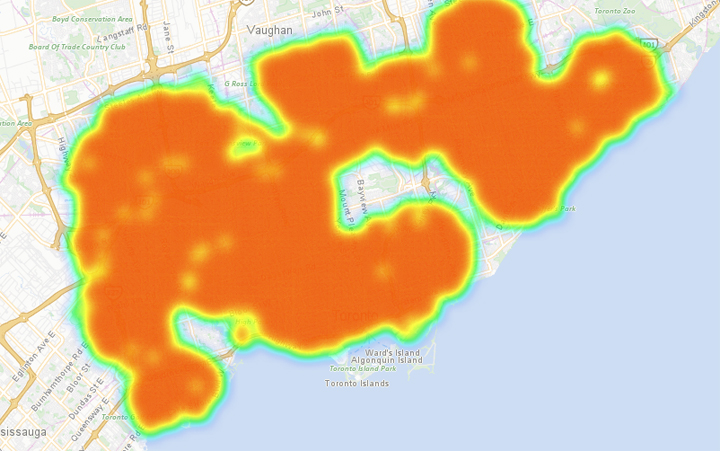WATCH: A Scarborough neighbourhood fighting to keep land the TDSB is selling off is banding together with other communities in their battle. Christina Stevens reports.
TORONTO – The TDSB says officials will take into account a wide-array of neighbourhood characteristics when it comes to closing schools but an analytics company suggests the age of young children in the neighbourhood is one of the most important.

The TDSB is reviewing whether 60 “under-utilized” schools should be closed. But according to analytics conducted by DMTI Spatial, at least one of the schools has an abundance of young kids nearby who will need a school.
Braeburn Junior School is located just off Albion Road, north of Highway 401 and is one of the many TDSB schools considered under-utilized and up for review in 2019.
But, according to analysis done by DMTI Spatial, it may not be a good idea as there are a lot of young kids in the area.
“There’s a really distinct population of children under the age of four that will be entering the school system in the next couple of years and that will have to be one of the factors that the school board looks at,” Philip Kaszuba, president of DMTI Spatial.
- Ontario alcohol expansion not related to early election speculation: minister
- Ford government’s Bill 124 backpay cost increases again, closing in on $7B
- Ontario city cracking down on ‘slum’ landlords who ‘ruin neighbourhoods’
- Ontario ends 2023-24 with nearly balanced budget, partly due to international tuition
DMTI Spatial, which maps and provides data to companies such as Apple, Google, Microsoft and Tom-Tom, mapped all of the 130 schools under review by the TDSB and analyzed them using nearly 1,400 characteristics including the demographics of the surrounding area, economic capability, the number of children in the home and the age of the children.
Some characteristics, like the age of the home, weren’t considered relevant while others, like the age of kids, was. But overall, Kaszouba said, their analysis found no particular economic or minority group was unduly affected by possible closures.
“It’s certainly one of the factors that the school board wants to look at is not just the community that’s there today but also the projection for the future,” Kaszouba said.

Get breaking National news
“So what you could easily determine is that with children 4 years and younger in the home, they’ll be entering the school system shortly.”
The TDSB declined to be interviewed for this story but did provide a statement saying they take into account a number of neighbourhood characteristics.
“We wouldn’t be in a position to comment on a third-party analysis,” the statement read. “In general however, any decision that involves the possible closure of a school would take into consideration a number of different factors, including but not limited to: Community input, demographics, enrollment trends, program options, child care, community use of space, transit, and location of other schools in the area.”
The 130 schools in the TDSB’s initial list of possible school closures represent only 20 per cent of the board’s schools but DMTI Spatial found nearly 70 per cent of Torontonians could be affected by a closure based on where they live.
And some areas have a far greater need for schools than others.
“We definitely found a couple of hot spots where there’s a revitalization of the community, where it’s changing, the demographics are changing, and where there’s a lot of young children that should be entering the program,” Kaszuba said.
One of the areas where there is a great need for schools is Lawrence Park. The area is currently undergoing revitalization and many of the families in the area have young kids.
Other areas, like downtown Toronto, don’t need as many schools, according to the analysis. In the map below, schools slated for review are marked in red, schools that are staying open are green. The varying colours surrounding the schools represent the perceived need of the community – darker red means there is or will be a significant need for schools while blue means the opposite.
The Ministry of Education did not respond to requests for comment.










Comments